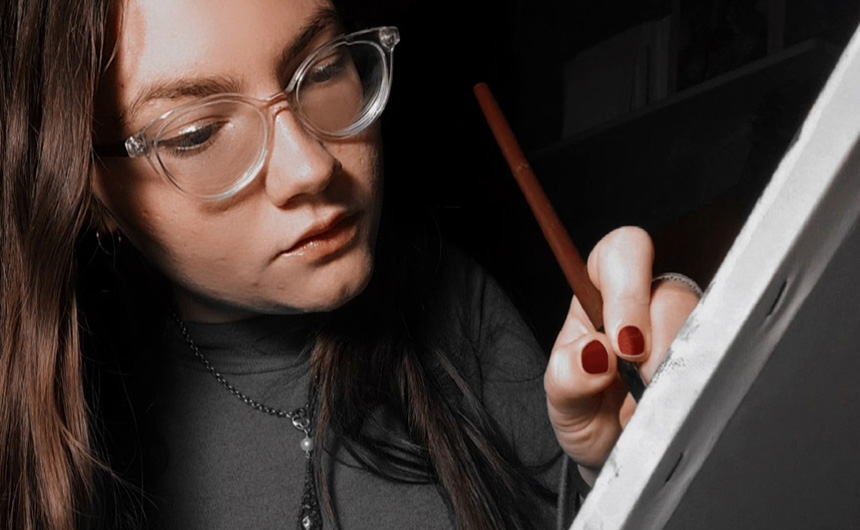Also this year the collaboration with the Accademia delle Belle Arti in Bari has produced surprising results and bears the name of the student Emanuela Carbonara.
The call launched last December, aimed to give students maximum freedom in the creativity of the image, so that it was exciting, communicative and recognizable in the local, national and international context. The essential point had to be the reference to the values of the Festival: to have an international scope and to rediscover the link between the territory, classical music and opera.
The visual created will be used throughout the 2023 communication campaign.
The call was attended, with the coordination of Prof. Rosa Anna Pucciarelli, Gaia Aloisio, Claudia Amatulli, Lisa Anna Balistreri, Emanuela Bellisario, Luca Bruscella, Federica Castorini, Debora Gregorio, Alessia Di Sisto, Debora Di Bari, Gabriele Mastropasqua, Pierfrancesco Mastrovito, Francesca Ribatti, Milillo Natale Alessio, Gaetano Roppo, Tiziana Sala, Carla Senerchia, Denise Sulis.
The commission, composed of Dr. Gennaro Carrieri – Director of the Fondazione Paolo Grassi, Dr. Sebastian F. Schwarz – Artistic Director of the Festival della Valle d’Itria, Dr. Giancarlo Chielli – Director of the Accademia delle Belle Arti in Bari, Dr. Piero Narcisi – Art Director of the communication agency GFC Associati, Dr. Biagio Scuderi – Head of communication Fondazione Paolo Grassi and Dr. Alessandra Filomena – Technician with secretary functions, declared unanimously Emanuela Carbonara the winner of the call and awarded her a scholarship worth 1500,00 euros.
The concept has been treated in a minimalist key, with a chromatic encounter between two fundamental colors: yellow, warm and enveloping color, which symbolizes the sun and cyan, cold and delicate, the color of our sea and the clear sky of Puglia. From their union the green, color of our land and ripe olives.
The figures represented are those evocative of the Valle d’Itria: the two faces unite their minds, thus bringing back to the theme of the meeting of cultures gathered in the territory.
The final graphic result depicts the fable of the Valle d’Itria, with some of its most famous symbols, such as the olive tree and the trullo.
A special thanks goes to the Accademia delle Belle Arti in Bari, because the creativity of young people is a certainty of beauty and continuous renewal.





